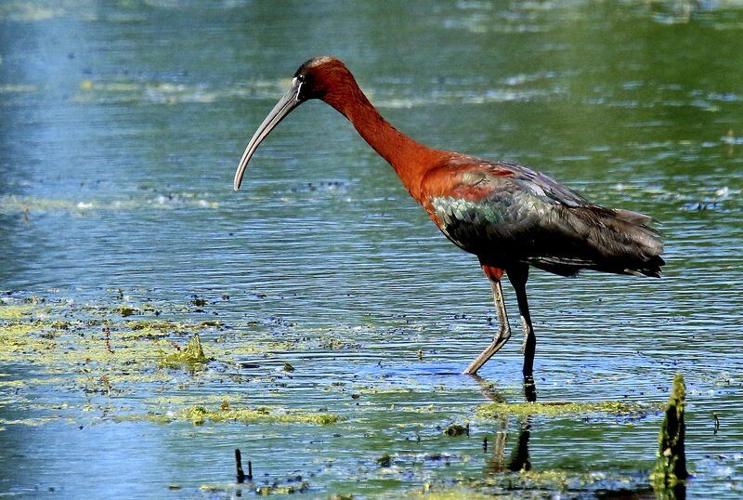The other day I had a photo adventure all planned out: Capturing great blue herons and great egrets in flight. I went to a location where these birds would fly by me while heading to the marsh to hunt. By 6 a.m. I had my blind set up, I was camouflaged and ready to shoot. It was a cool 50 degrees, but a full sun was forecast, so I dressed light for the occasion. That was a mistake, as a strong west wind came up and blew straight into me from across the marsh, keeping the air (and me) cold. I stuck it out until 8 a.m., getting some nice shots but not quite what I was looking for. I did manage to get a glimpse of a prothonotary warbler, a rare bird now, before I called it quits.
I got warmed up while I hiked back to my vehicle by putting on a hoodie. There was good light yet, so I decided to go to another location where a pair of trumpeter swans had just hatched out six cute cygnets. I had visited this location the day before and that pair of swans knew me; I have been photographing them for three years and they have learned to trust me. I was also eager to see if the young ones were still OK.
(One year I was photographing the pair with their little ones and a snapping turtle took one of the cygnets; the turtle grabbed another one, too, but he escaped and to this day has a big crook in his neck from that experience. I named him “Crooked Neck” and he still spends his summers in the Alabama Swamp. Snapping turtles are really hard on baby ducks, swans and geese, grabbing them from below as the babies swim over them.)
When I arrived the parents had the little guys, all six of them, out in the marsh feeding, so I waited, hoping they would move closer, which they did after awhile. In fact they swam right over to me to get up on a small island where they like to rest and offered me some great shots as they milled around the edge of the island.
I like to spend time in a situation like this even after I've gotten good pictures; often the subject matter offers some different types of photographing opportunities, plus you learn more about them as you observe over time. The cygnets actually all fell asleep right in front of me, but a few great egrets were feeding nearby, so my attention was periodically diverted to them.
Then it happened. A dark bird flew in and landed not too far from me. At first I thought it was a little green heron, but as soon as I trained my lens on it, I got really excited. It was a glossy ibis, a rare bird in this area!
He settled down and started wading around looking for a snack. Tall grass between us made it easy for me to use a low and slow approach to get closer. And, the lighting was perfect to capture the bird's glossy appearance for which it's named. I got some great shots and my so-so morning out shooting became super.
I had seen a group of four glossy ibises a few weeks prior, near the same location, while photographing 50 or more great egrets that were feeding there. (The marsh was being drawn down to allow it to rejuvenate itself. As the water is slowly drained, a lot of food for egrets, herons and shore birds is exposed.) Unfortunately the ibises were very far away and the lighting was bad, so I didn't get any good shots of them.
I decided to take a break from that location for a few days, and then the ibises' presence was broadcast on the internet. A constant flow of people followed, the birds being scared off as humans paraded up and down the dike looking like neon lights. After a week of all that attention the birds abandoned the area — and my hope of getting some good shots of them was dashed.
The glossy ibis is about 2 feet long with a wing span of about 3 feet. It gets its name from its glossy, dark brown, purplish and gray feathers but its real standout feature is its 4 to 6-inch long, turned-down beak. It uses that long beak to probe the mud while wading in search of aquatic critters: snails, insects, mussels, crabs, beetles, small fish.
Glossy ibis is a marsh bird found mostly along the U.S. east coast and in Florida. It is rare inland, so I was in heaven as I got to “capture” one under ideal conditions and at the same time photograph the baby swans and some egrets hunting nearby. Eventually the cygnets got active (hungry), aroused their parents and moved off the island to feed in the water.
I had only planned on spending a bit of time at this spot but ended up staying an hour and half. The glossy ibis continued to hunt near me and was still there when I slowly retreated from the area, keeping a low profile.
All days outdoors are great but some are really super.
Doug Domedion, outdoorsman and nature photographer, resides in Medina. Contact him at (585) 798-4022 or woodduck2020@yahoo.com.

















Commented
Sorry, there are no recent results for popular commented articles.